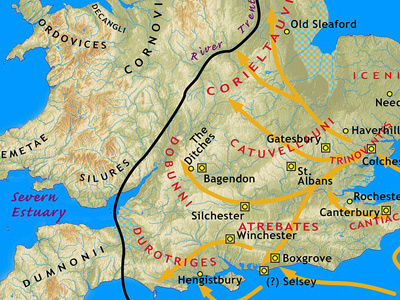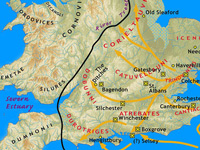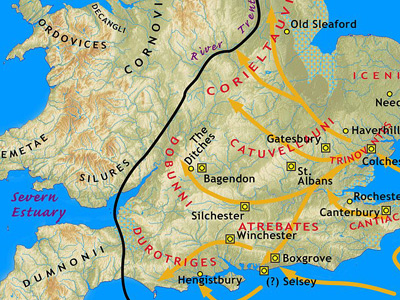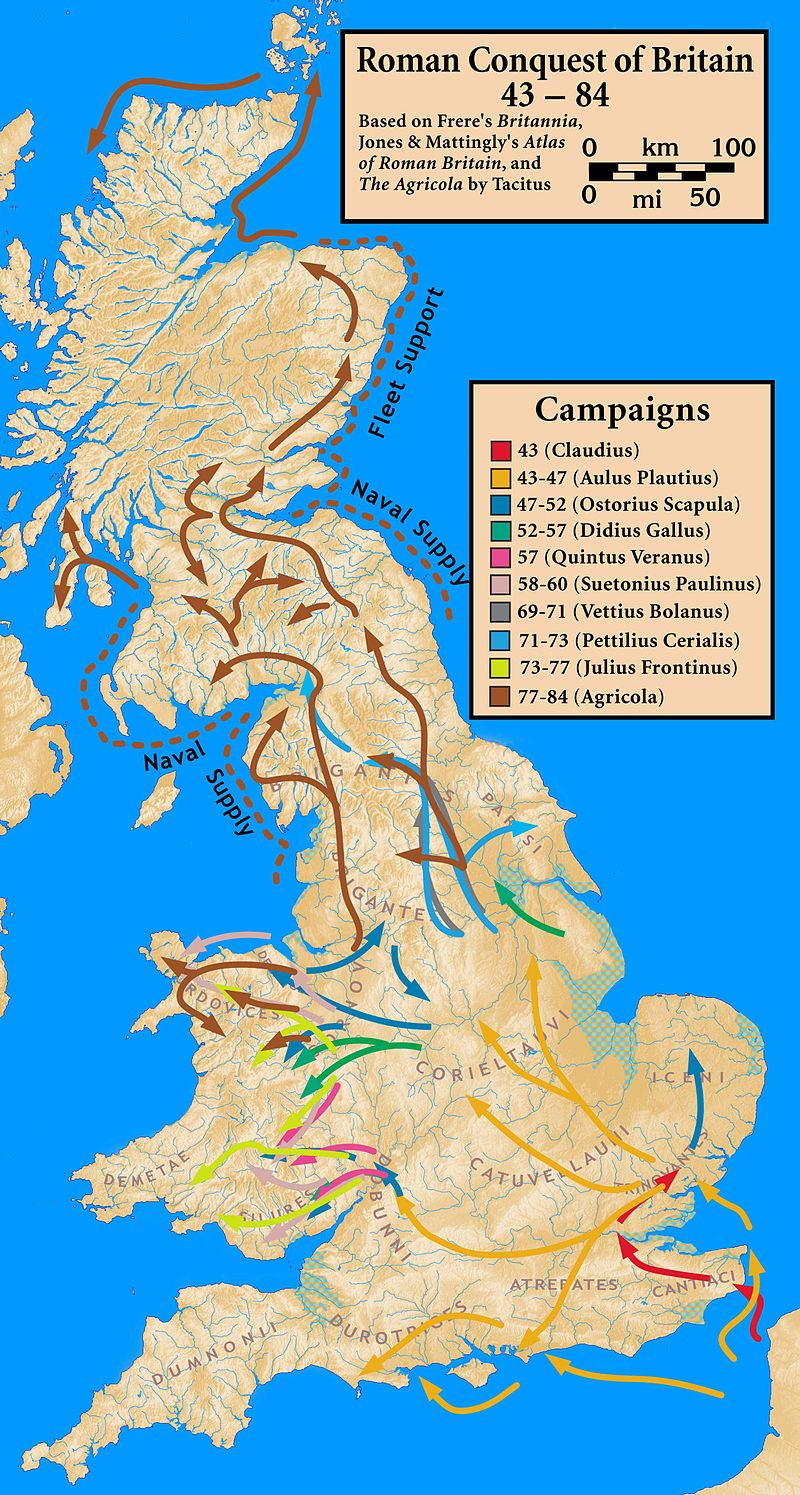Roman conquest of Britain (43-96 AD)

Claudian Preparations
Three years later, in 43 AD, possibly by re-collecting Caligula's troops, Claudius mounted an invasion force to re-instate Verica, an exiled king of the Atrebates. Aulus Plautius, a distinguished senator, was given overall charge of four legions, totalling about 20,000 men, plus about the same number of auxiliaries. The Roman The Roman Empire was the post-Republican period of ancient Rome. As a polity, it included large territorial holdings around the Mediterranean Sea in Europe, North Africa, and Western Asia, and was ruled by emperors. The first two centuries of the Roman Empire saw a period of unprecedented stability and prosperity known as the Pax Romana ('Roman Peace'). The Empire was later ruled by multiple emperors who shared control over the Western Roman Empire and the Eastern Roman Empire. legions were:
The Roman Empire was the post-Republican period of ancient Rome. As a polity, it included large territorial holdings around the Mediterranean Sea in Europe, North Africa, and Western Asia, and was ruled by emperors. The first two centuries of the Roman Empire saw a period of unprecedented stability and prosperity known as the Pax Romana ('Roman Peace'). The Empire was later ruled by multiple emperors who shared control over the Western Roman Empire and the Eastern Roman Empire. legions were:
- Legio II Augusta
- Legio IX Hispana
- Legio XIV Gemina
- Legio XX Valeria Victrix
The II Augusta is known to have been commanded by the future emperor Vespasian. Three other men of appropriate rank to command legions are known from the sources to have been involved in the invasion. Cassius Dio mentions Gnaeus Hosidius Geta, who probably led the IX Hispana, and Vespasian's brother Titus Flavius Sabinus the Younger. He wrote that Sabinus was Vespasian's lieutenant, but as Sabinus was the older brother and preceded Vespasian into public life, he could hardly have been a military tribune. Eutropius mentions Gnaeus Sentius Saturninus, although as a former consul he may have been too senior, and perhaps accompanied Claudius later.
HISTORY

RESOURCES
This article uses material from the Wikipedia article "Roman conquest of Britain", which is released under the Creative Commons Attribution-Share-Alike License 3.0.
© Stories Preschool. All Rights Reserved.










